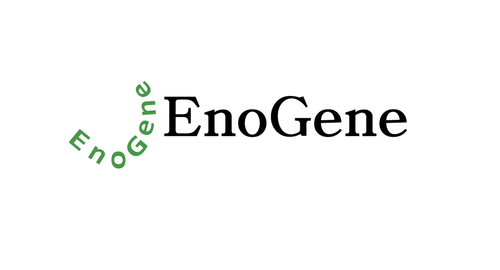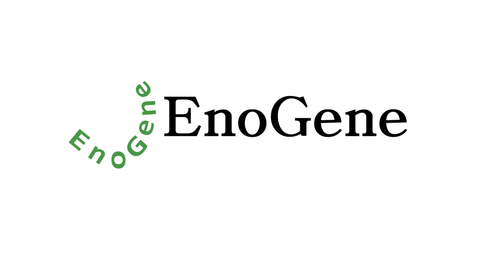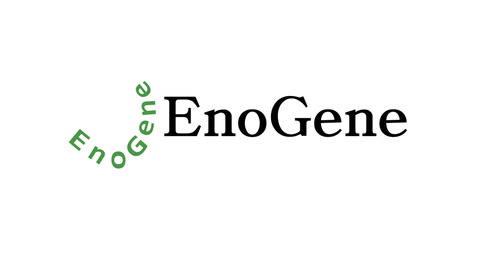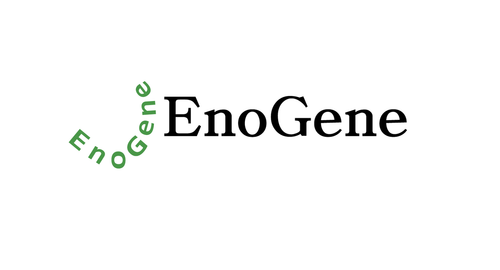Product Description
INSR Antibody (C-term) [APR08014G] | Leading Biology
Product Category: Polyclonal Antibodies
Host: Rabbit
Species Reactivity: Rat
Specificity: This INSR antibody is generated from a rabbit immunized with a KLH conjugated synthetic peptide between 1362-1395 amino acids from the C-terminal region of human INSR.
Cellular Localisation: Cell membrane {ECO:0000250|UniProtKB:P15208}; Single-pass type I membrane protein. Late endosome {ECO:0000250|UniProtKB:P15208}. Lysosome {ECO:0000250|UniProtKB:P15208}. Note=Binding of insulin to INSR induces internalization and lysosomal degradation of the receptor, a means for downregulating this signaling pathway after stimulation. In the presence of SORL1, internalized INSR molecules are redirected back to the cell surface, thereby preventing their lysosomal catabolism and strengthening insulin signal reception. {ECO:0000250|UniProtKB:P15208}
Molecular Weight: 156333
Clone: Polyclonal
Gene Name: INSR
Gene ID: 3643
Function: Receptor tyrosine kinase which mediates the pleiotropic actions of insulin. Binding of insulin leads to phosphorylation of several intracellular substrates, including, insulin receptor substrates (IRS1, 2, 3, 4), SHC, GAB1, CBL and other signaling intermediates. Each of these phosphorylated proteins serve as docking proteins for other signaling proteins that contain Src-homology-2 domains (SH2 domain) that specifically recognize different phosphotyrosine residues, including the p85 regulatory subunit of PI3K and SHP2. Phosphorylation of IRSs proteins lead to the activation of two main signaling pathways: the PI3K-AKT/PKB pathway, which is responsible for most of the metabolic actions of insulin, and the Ras- MAPK pathway, which regulates expression of some genes and cooperates with the PI3K pathway to control cell growth and differentiation. Binding of the SH2 domains of PI3K to phosphotyrosines on IRS1 leads to the activation of PI3K and the generation of phosphatidylinositol- (3, 4, 5) -triphosphate (PIP3), a lipid second messenger, which activates several PIP3-dependent serine/threonine kinases, such as PDPK1 and subsequently AKT/PKB. The net effect of this pathway is to produce a translocation of the glucose transporter SLC2A4/GLUT4 from cytoplasmic vesicles to the cell membrane to facilitate glucose transport. Moreover, upon insulin stimulation, activated AKT/PKB is responsible for: anti-apoptotic effect of insulin by inducing phosphorylation of BAD; regulates the expression of gluconeogenic and lipogenic enzymes by controlling the activity of the winged helix or forkhead (FOX) class of transcription factors. Another pathway regulated by PI3K-AKT/PKB activation is mTORC1 signaling pathway which regulates cell growth and metabolism and integrates signals from insulin. AKT mediates insulin- stimulated protein synthesis by phosphorylating TSC2 thereby activating mTORC1 pathway. The Ras/RAF/MAP2K/MAPK pathway is mainly involved in mediating cell growth, survival and cellular differentiation of insulin. Phosphorylated IRS1 recruits GRB2/SOS complex, which triggers the activation of the Ras/RAF/MAP2K/MAPK pathway. In addition to binding insulin, the insulin receptor can bind insulin-like growth factors (IGFI and IGFII) . Isoform Short has a higher affinity for IGFII binding. When present in a hybrid receptor with IGF1R, binds IGF1. PubMed:12138094 shows that hybrid receptors composed of IGF1R and INSR isoform Long are activated with a high affinity by IGF1, with low affinity by IGF2 and not significantly activated by insulin, and that hybrid receptors composed of IGF1R and INSR isoform Short are activated by IGF1, IGF2 and insulin. In contrast, PubMed:16831875 shows that hybrid receptors composed of IGF1R and INSR isoform Long and hybrid receptors composed of IGF1R and INSR isoform Short have similar binding characteristics, both bind IGF1 and have a low affinity for insulin. In adipocytes, inhibits lipolysis (By similarity) .
Summary: Tissue Location: Isoform Long and isoform Short are predominantly expressed in tissue targets of insulin metabolic effects: liver, adipose tissue and skeletal muscle but are also expressed in the peripheral nerve, kidney, pulmonary alveoli, pancreatic acini, placenta vascular endothelium, fibroblasts, monocytes, granulocytes, erythrocytes and skin. Isoform Short is preferentially expressed in fetal cells such as fetal fibroblasts, muscle, liver and kidney. Found as a hybrid receptor with IGF1R in muscle, heart, kidney, adipose tissue, skeletal muscle, hepatoma, fibroblasts, spleen and placenta (at protein level) . Overexpressed in several tumors, including breast, colon, lung, ovary, and thyroid carcinomas
Form: N/A
Storage: Store at +4°C short term. For long-term storage, aliquot and store at -20°C or below. Stable for 12 months at -20°C. Avoid repeated freeze-thaw cycles.
Application: WB
Dilution: WB--1:1000
Synonyms: Insulin receptor, IR, CD220, Insulin receptor subunit alpha, Insulin receptor subunit beta, INSR
 Euro
Euro
 USD
USD
 British Pound
British Pound
 NULL
NULL

![INSR Antibody (C-term) [APR08014G] INSR Antibody (C-term) [APR08014G]](https://cdn11.bigcommerce.com/s-452hpg8iuh/images/stencil/1280x1280/products/869533/1161600/logo__92149.1659788186__63906.1659865713.png?c=2)
![INSR Antibody (C-term) [APR08014G] INSR Antibody (C-term) [APR08014G]](https://cdn11.bigcommerce.com/s-452hpg8iuh/images/stencil/100x100/products/869533/1161600/logo__92149.1659788186__63906.1659865713.png?c=2)
![INSR Antibody (C-term) [APR08014G] INSR Antibody (C-term) [APR08014G]](https://cdn11.bigcommerce.com/s-452hpg8iuh/images/stencil/500x659/products/869533/1161600/logo__92149.1659788186__63906.1659865713.png?c=2)

![INSR Antibody (N-term) [APR08015G] INSR Antibody (N-term) [APR08015G]](https://cdn11.bigcommerce.com/s-452hpg8iuh/images/stencil/500x659/products/869051/1161118/logo__92149.1659788186__28870.1659865329.png?c=2)
![INSR (Insulin Receptor) Antibody (N-term) [APR08016G] INSR (Insulin Receptor) Antibody (N-term) [APR08016G]](https://cdn11.bigcommerce.com/s-452hpg8iuh/images/stencil/500x659/products/868258/1160325/logo__92149.1659788186__19248.1659864300.png?c=2)





